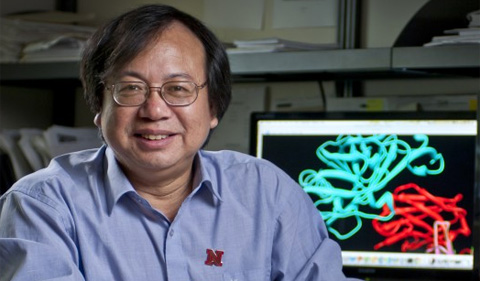Ohio University’s Chemistry and Biochemistry Colloquium Series presents Dr. Thomas A. Schmedake on “Hexacoordinate Polypyridylsilicon (IV) Complexes for Electrochromic and Catalytic Applications” on Monday, Sept. 12, at 4:10 p.m. in Clippinger Laboratories 194.

Dr. Thomas Schmedake
Schmedake is Associate Professor of Inorganic Chemistry at the University of North Carolina – Charlotte.
Abstract: Pyridine-containing ligands, especially polypyridines, are very attractive ligands for hexacoordinate silicon complexes, since they provide enhanced stability, tailorable redox-activity, and extensive chemical variability. Spectroelectrochemistry studies suggest that hexacoordinate polypyridylsilicon(IV) complexes are potential candidates for a broad spectrum of electrochromic dyes. Tris-bipyridinesilicon(IV) complexes and bis-terpyridylsilicon(IV) complexes are simple to synthesize, resistant to oxygen and water, and are often colorless or nearly colorless as hexafluorophosphate salts. They are readily reduced with multiple electrons at low reduction potentials, and exhibit excellent electrochemical reversibility. The reduced species exhibit strong transitions in the visible portion of the spectrum attributable to ligand localized transitions.
Hexacoordinate polypyridylsilicon(IV) diols are being explored as potential candidates for dual-hydrogen bond donor catalysis. These silane diols are fairly resistant to hydrolysis, have been observed to catalyze the addition of N-methylindole to trans-β-nitrostyrene, and have the potential to provide a rigid scaffold for asymmetric catalysis.



















Comments